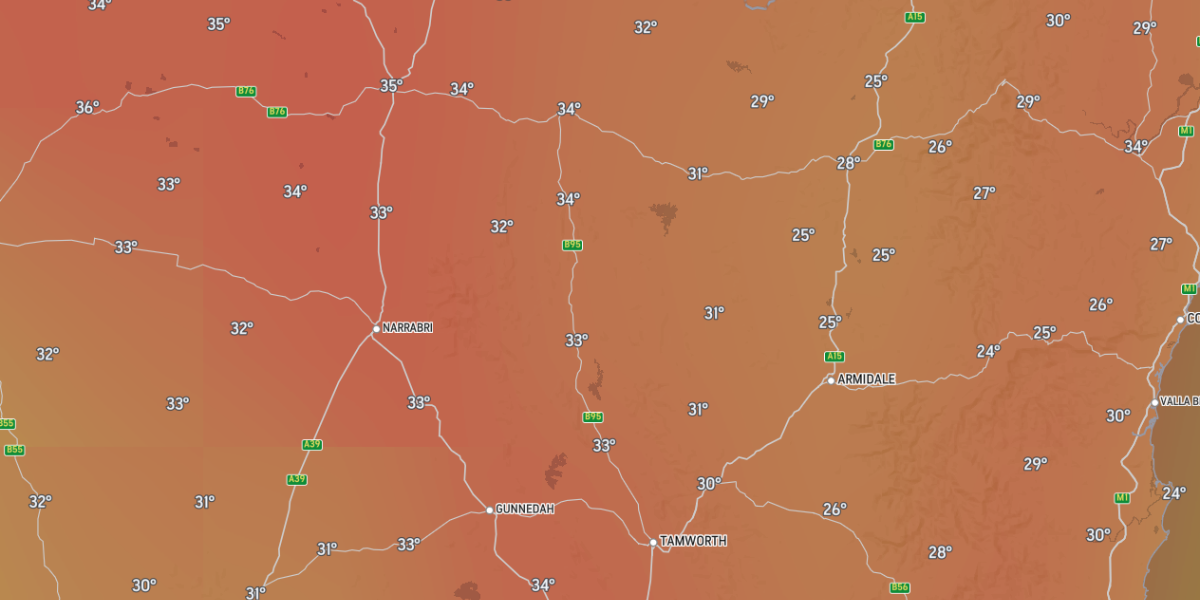Sweltering workers and residents are being asked to go easy on air-conditioning and turn off lights and appliances as authorities scramble to prevent blackouts during a late spring heatwave on the east coast.
The energy regulator has forecast a shortfall in electricity supplies in NSW between 3.30pm and 5pm on Wednesday brought on by high demand and outages at key coal-fired power plants.
In the New England, most centres are still above 30 degrees, with Gunnedah at 36 and Moree at 35. Fortunately there are no significant bush fires reported, with only a couple of grass fires under control.
Hundreds of thousands of public servants across the state have been asked to lift thermostat settings on air-conditioners and take other energy-saving measures.
Major energy users such as water providers and the City of Sydney will lower their power demands between 3pm and 8pm, shifting electricity usage outside the peak window.
But NSW Energy Minister Penny Sharpe called on the public to also do their bit to ensure there were no power shortages.
“It’s really important for people to know this is voluntary, people have situations where they are not able to do that, that is OK,” she said.
“But what we are trying to do is reduce demand across the system by large energy users, by the government as well, and we now ask households and businesses to see what they can do … a lot of small activities actually really help demand across the network.”
The Australian Energy Market Operator’s declaration urged industry to generate as much power as possible and restore all available powerlines across the grid to meet the rocketing demand.
The Bureau of Meteorology has issued severe heatwave warnings for large swathes of the NSW coast, including the Sydney metropolitan area, the Hunter region and the south coast.
Warnings also remain in place for parts of ACT and Queensland, including an extreme heatwave for Australia’s far-north tip.
Four coal-plant units are offline in NSW, with a number of operators undertaking planned maintenance before the usual summer peak in demand.
But climate change had extended the hot season, which should prompt a re-think on when maintenance takes place while renewable energy sources were rolled out, Premier Chris Minns said.
“Utilities go through their maintenance program and repair program so they’re ready for the peak summer period or the peak winter period,” he said.
“(But) increasingly, you’ll see heatwave conditions earlier and earlier in the year and obviously we have to manage that, but at the same time, we’re seeing more solar come on and more battery technology that can fill the gap.”
Federal Energy Minister Chris Bowen earlier insisted there was enough electricity in reserve to get through the day, adding the system was acting as intended.
“Obviously, AEMO is always on the lookout for unexpected events which they need to prepare for, they’ve put all the necessary protections in place as they can at this point,” he said.
Sydney’s city centre recorded a peak temperature of nearly 33C late on Wednesday morning, while by early afternoon the mercury had risen to nearly 39C across a swathe of suburbs from the southwest to northwest.
Western Sydney peak temperature forecasts were more than 10C above November average maximums, weather bureau senior meteorologist Miriam Bradbury said.
“While anomalously high, these temperatures are not expected to break any records (but) it’s more the duration of the warm conditions, including those warm nights, that is more significant,” she said.
“It’s also worth noting that the ‘feels like’ temperatures will be oppressive due to the high humidity levels.”
Rain is predicted to hit eastern NSW on Thursday, although warm, humid conditions will persist.
Don’t miss any of the important stories from around the region. Subscribe to our email list.


